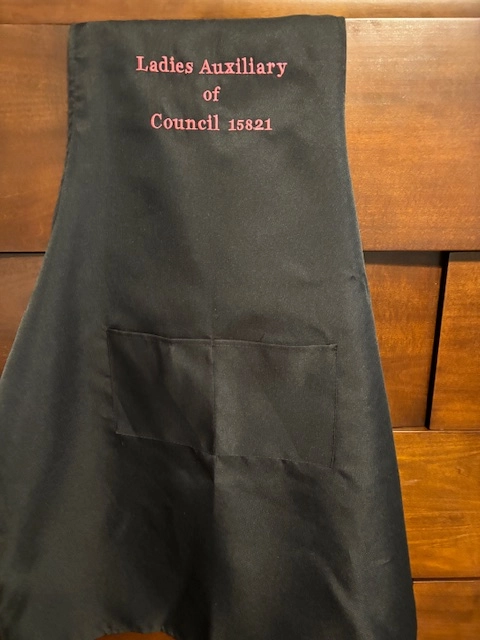Stylish Monogramming on Towels for a Touch of Luxury
Stylish Monogramming on Towels for a Touch of Luxury
Blog Article
The Art of Custom Needlework: Opening the Tricks to Creating Distinct and Remarkable Layouts
The keys to developing customized needlework layouts that mesmerize the eye and leave a long-term impression lie in a delicate balance of method, creative thinking, and attention to detail. As we dive right into the world of customized needlework, we uncover the nuanced interplay between string choice, stitch complexity, and design personalization that boosts a plain garment to a job of art.
Picking the Right Needlework Threads
When picking needlework threads, what key variables should you think about to ensure the very best outcomes for your personalized styles? The selection of needlework thread is critical in figuring out the final end result of your stitched style. One of the primary factors to consider is the product of the thread. Different materials such as cotton, polyester, rayon, and silk use differing levels of sheen, resilience, and texture. It is important to pick a string material that enhances the textile you are embroidering on and straightens with the desired appearance of the design.
Thicker threads can add measurement and appearance to your layout, while finer strings are perfect for complex information and small text. In addition, considering the color fastness and washability of the thread is vital to make sure that your custom-made styles preserve their quality and vibrancy over time.
Discovering Different Stitch Strategies
To look into the realm of 'Discovering Various Stitch Strategies', one have to grasp the details and subtleties that each stitching method brings to the art of embroidery. Various stitch methods not just add aesthetic interest however likewise contribute to the total appearance and dimension of the design. One prominent stitch method is the satin stitch, which includes closely stuffed parallel stitches to produce a smooth and glossy surface area, suitable for loading in shapes and creating bold outlines.
On the other hand, the backstitch is a versatile technique frequently used for describing and including fine information. It involves stitching in reverse to develop a strong line of embroidery. Additionally, the French knot stitch adds a responsive component to styles, best for producing distinctive accents like flower facilities or attractive touches.
Exploring different stitch techniques allows embroiderers to play with light, shadow, and depth within their styles, raising the visual charm and imaginative quality of their embroidery projects. By mastering various sewing techniques, one can unlock countless opportunities for creating unique and remarkable custom-made embroidery pieces.
Incorporating Personalized Layout Components
Having discovered the ins and outs of various stitch methods such as the satin stitch, backstitch, and French knot, the focus now shifts in the direction of including tailored design aspects in personalized needlework jobs. Customized design aspects play an essential duty in making embroidery tasks really unique and unforgettable. One way to integrate customization is by including initials, names, or substantial days to the style. This not only includes a customized touch yet also boosts the sentimental value of the needlework piece.
Another method to include personalized design aspects is by including signs or themes that hold unique definition to the recipient or mirror their passions and individuality. Integrating a preferred blossom, animal, or hobby-related sign can make the embroidery layout extra purposeful and personalized. Additionally, choosing colors that resonate with the recipient or align with the intended motif can better boost the customization of the needlework task.
Understanding the Art of Shade Sychronisation
One secret facet of shade coordination is understanding color theory. This consists of recognizing just how various shades interact with each other, the emotions they convey, and exactly how they can be integrated to develop visually appealing designs. By applying best italian suit makers color theory principles, embroiderers can create harmonious color palettes that enhance the overall look of the design.
Furthermore, paying interest to contrast is critical in color coordination. Utilizing contrasting colors can help certain elements of the design pop, improve legibility, and develop an aesthetically vibrant needlework item. By grasping the art of color sychronisation, embroiderers can elevate their styles and produce unforgettable pieces that resonate with clients and viewers alike.
Enhancing Appearance With Advanced Needlework Stitches

French knots, for instance, are ideal for adding little, increased dots to your style, simulating the look of beads or producing a textured surface. Bullion knots, on the other hand, can be used to create twisted, ropelike elements that add an elegant feel to the embroidery. Seed stitching involves tiny, scattered stitches that can complete locations with a multicolor structure, while turkey job develops cosy, dimensional accents reminiscent of pet hair or vegetation. Trying out with these innovative needlework stitches enables you to push the limits of conventional embroidery and create truly special and visually appealing textures in your layouts.
Verdict
To conclude, the art of custom-made embroidery involves a mix of picking the appropriate strings, exploring numerous stitch strategies, integrating tailored layout components, mastering shade control, and improving appearance with innovative stitches. By comprehending and implementing these crucial elements, embroiderers can produce unique and remarkable designs that display their creativity and ability. Embroidery lovers can open the tricks to developing stunning and custom items cheap shirts made that stand out and leave a long-term perception.
Report this page